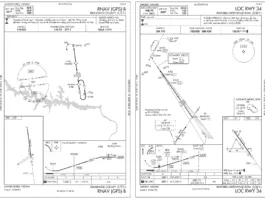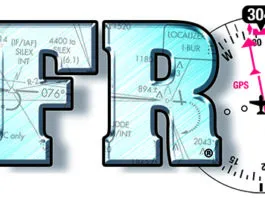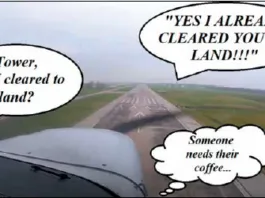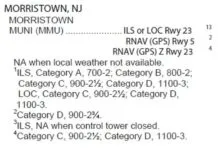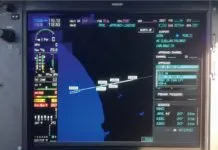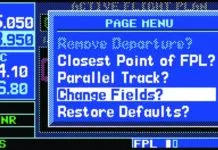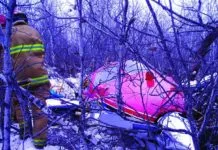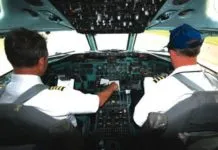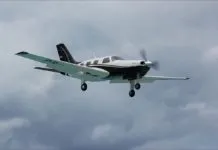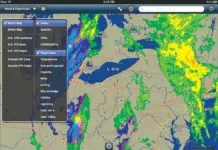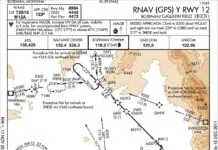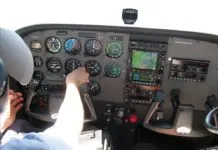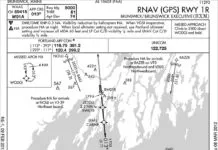Bursting the Bubble
Not every threat is directly controlled by someone on the ground. Some are just lazily drifting about, riding the winds, rising into the skies...
Nonstandard Alternate Minimums
The article covered how procedures can be unavailable for alternate planning, but what about those that are available, but require non-standard alternate minimums? The...
You Cant Fly that Curve
When I learned IFR, the oddball technique for GA pilots was the DME Arc. These were the days of turn 10, twist 10, which was the best we had for approximating a curve using the straight-line navigation of VORs and slant-range distance. When GPS came on the scene, the box simply drew the magenta line in an arc and we, or George, followed it. An era was over.
Building Your IFR Nest Out Of Glass
A short IFR flight should be easier in a glass cockpit. Youve got all the information you need just a twist and a push away-so long as you know without thinking which knob to twist and which button to push.
Getting Caught Down Low
Most thunderstorm-related accidents happen when departing or approaching the airport. Flying near the convective cloud bases exposes you to the most dangerous aspects of a thunderstorm. Reduced visibility, low ceilings, hail, strong straight-line winds and lightning are all possibilities, but more imperceptible hazards lurk.
To Brief or Not to Brief
[IMGCAP(1)]Question: What do pilots hate most of all? Answer: Check rides Question: Other than check rides, what do pilots hate most of all? Answer: FAA ramp checks Question: OK, other than check rides and ramp checks, what do pilots hate most of all? Answer: Thunders… Enough. What pilots hate, almost more than anything else are surprises. This might not be obvious, but think about it. If you know whats coming, youre prepared for it, but the unexpected requires…
ATC Watches – You Fly
Standing to get a closer view of my towers radar display, I said, That doesnt look right. Somewhere in the dense, ragged and choppy 300-foot overcast outside the tower windows, there was a Piper Matrix inbound on the ILS. Well, supposedly on the ILS. His target was crossing the final approach fix several hundred feet lower than published and a half mile to the right.
Ipad for IFR update
I get the question a lot: Whats the best iPad app for aviation? Its impossible to answer. Not only is there no perfect app for all users, the field changes so quickly advice is only good until the competition releases its next update. In fact, I cant even answer whats the best app for only chart use under IFR.
PT in the days of RNAV
It used to be the procedure turn (PT) was the lynchpin of many an instrument approach. Youd track to the VOR or NDB station located on the airport, fly outbound, use a PT to reverse course, and fly back to the station on a specific course while descending to the specified minimum descent altitude. If you didnt visually acquire the airport, locating the missed approach point was a simple matter of identifying station passage.
Partial Panel with GPS
Despite the magazine vogue of articles on glass cockpits and technologically advanced airplanes, thousands of us continue to fly steam gauges. A well-equipped steam-gauge airplane enables a competent pilot to fly the same mission that a glass airplane can fly. The Apollo spacecraft were steam-gauge equipped and carried men to the moon.
On The Air: March 2012
Heard this one on a hard-IFR trip down V27 off the California coast. The weather was scuzzy with heavy rain from the surface up to the flight levels with no layers at all. Despite this, ATC valiantly continued trying to call traffic:NORCAL Approach: Skywest Two Niner Six Five, traffic is a Beech Sierra, 12 oclock, opposite direction at 8000.Skywest 2965: Approach, Skywest Two Niner Six Five is IMC.Approach: Beech Seven Four Papa, traffic 12 oclock,…
Stalking the Elusive LP
With the advent of WAAS, the FAA developed approaches that provided vertical guidance while offering the lateral accuracy that previously was only available with an ILS or localizer approach. It was named LPV for Localizer Performance with Vertical and now sports decision heights as low as 200 feet.


